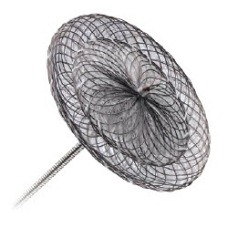
The results of CLOSE, Gore Reduce and the extended follow-up of RESPECT—all published in The New England Journal of Medicine—indicate that percutaneous closure of patent foramen ovale (PFO) is associated with a significant reduction in ischaemic stroke in patients with prior cryptogenic stroke. However, two of the studies indicate that closure is also associated with an increased risk of atrial fibrillation.
Data for percutaneous PFO closure have been mixed. While several trials did not find a benefit with the procedure, two meta-analysis of the Amplatzer PFO Occluder (Abbott) did. Furthermore, Jeffrey L Saver (University of California, Los Angeles, Ronald Regan, UCLA Medical Center, Los Angeles, USA) and others write in The New England Journal of Medicine that the follow-up period of RESPECT—one of the randomised trials to not show a benefit—averaged from two to four years. Therefore, they explored outcomes in an extended follow-up period (5.9 years) to “provide insight into the long-term effects of PFO closure”.
Saver et al report that in this extended follow-up of RESPECT (Randomised evaluation of recurrent stroke comparing PFO closure to established current standard of care treatment), which was previously presented at the 2016 Transcatheter Cardiovascular Therapeutics meeting, PFO closure with the Amplatzer PFO Occluder device was associated with a significant reduction in recurrent ischaemic stroke in patients who were aged 18–60 years of age at the time of an index cryptogenic stroke.
In the CLOSE (PFO closure or anticoagulation vs. antiplatelet therapy to prevent stroke recurrence) trial, patients with recent stroke attributed to PFO (with associated atrial septal aneurysm or larger interarterial shunt) were randomised to undergo PFO closure plus antiplatelet therapy (238) or to receive antiplatelet therapy alone (235). Investigators Jean-Louis Mas (Department of Neurology, Hôpital Sainte-Anne, Paris, France) and others report in The New England Journal of Medicine that, in an intention-to-treat analysis, no strokes occurred in the PFO closure group compared with 14 in the antiplatelet alone group (p<0.001 for the comparison). They comment: “The Kaplan-Meier five-year cumulative estimate of the probability of stroke was 4.9% in the antiplatelet group.” Furthermore, no explanation was found for the 14 strokes that occurred in the antiplatelet alone group. “The secondary composite outcome of stroke, transient ischaemic stroke, or systemic embolism occurred in significantly fewer patients in the PFO closure group than in the antiplatelet only group (3.4% vs. 8.9%; p=0.01),” the authors comment.
However, Mas et al also found that the rate of new-onset atrial fibrillation or flutter was significantly higher in the PFO closure group: 4.6% vs. 0.9% in the antiplatelet only group (p=0.02). They comment that most of these cases of atrial fibrillation were identified within one month—“a finding that suggests the procedure itself induces atrial fibrillation”. According to the authors, atrial fibrillation did not reoccur in the follow-up period (range 4.4 years) and the risk of stroke associated with this outcome has not been determined. Mas et al conclude: “Among patients who had had a recent cryptogenic stroke attributed to PFO with an associated atrial septal aneurysm or large interarterial shunt, the rate of stroke recurrence was lower among those assigned to PFO closure combined with antiplatelet therapy than among those assigned to antiplatelet therapy alone.” However, they add that PFO closure was also associated with “an increased risk of atrial fibrillation”.

Mas told Cardiovascular News: “In CLOSE, atrial fibrillation was a short-lived phenomenon with no recurrence and no stroke during a mean follow-up of about four years. However, further studies in larger numbers of patients are needed to assess the long-term prognosis of atrial fibrillation secondary to PFO closure.”
According to results of the Gore REDUCE trial, also published in The New England Journal of Medicine, PFO closure with the Helex septal occluder or the Cardioform septal occluder (both Gore) was associated with a significant reduction in ischaemic stroke in patients with a cryptogenic stroke compared with antiplatelet therapy alone (median follow-up 3.2 years): 1.4% vs. 5.4% (p=0.002). PFO closure was also associated with a significant reduction in new brain infarctions (p=0.04 for the comparison). However, again, new-onset atrial fibrillation or flutter was higher with PFO closure: 6.6% vs. 0.4% for the antiplatelet group (p<0.001).
Similar to Mas et al conclude, study authors Lars Søndergaard (Department of Cardiology, Rigshospitalet, University of Copenhagen, Copenhagen, Denmark) and others conclude that PFO closure was associated with a significantly lower risk of subsequent ischaemic stroke but higher rates of atrial fibrillation.












